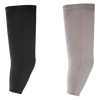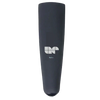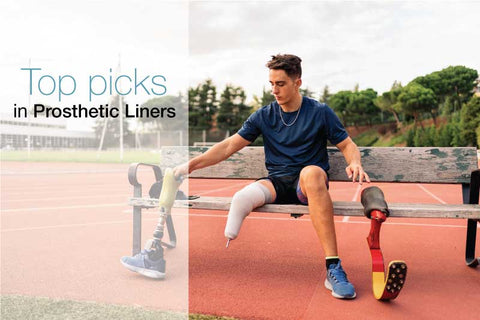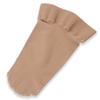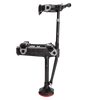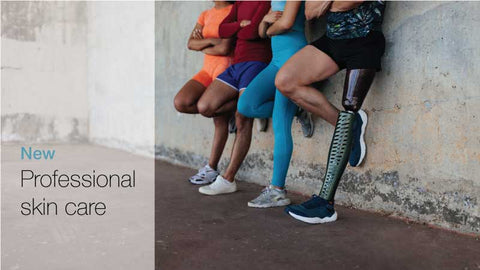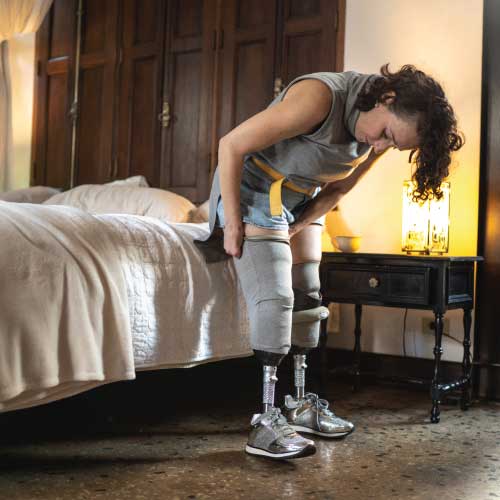Neural-Controlled Prosthetic Leg Recreates Natural Walking Experience
Reading Time: 5 minutes
Existing advanced prosthetic limbs enable individuals with limb loss to walk more naturally than older models. But the one thing these devices do not yet offer users is complete neural control. Instead, they generally depend on robotic sensors and pre-programmed algorithms to move.

Researchers at the Massachusetts Institute of Technology (MIT), alongside experts from Brigham and Women’s Hospital, developed a new surgical technique and neuroprosthetic interface. Their findings indicate that a prosthetic leg can be entirely powered by the user’s nervous system, allowing for a truly natural walking gait.
The surgical technique known as the agonist-antagonist myoneural interface (AMI) allows individuals to control prosthetic limbs through their nervous system, effectively restoring a sense of proprioception. This means that users can perceive the position of their prosthetic limb in space just as they would with their natural limb.
A study published in Nature Medicine in July 2024 involved seven participants who underwent AMI surgery. The researchers discovered that these individuals could walk more quickly, navigate around obstacles, and ascend stairs with greater ease compared to those with traditional amputations.
Hugh Herr, the senior author of the study, noted that this is the first prosthetic study in history to show a leg prosthesis that functions through full neural modulation. “No one has been able to show this level of brain control producing a natural gait,” allowing the human nervous system to control movement rather than relying on robotic algorithms.
Herr is also the co-director of the K. Lisa Yan Center for Bionics at MIT and an associate member of the McGovern Institute for Brain Research. Hyungeun Song, a researcher completing his postdoctoral fellowship at MIT’s Media Lab, is the paper’s lead author.
In addition to achieving a more natural walking pattern, patients who received AMI surgery reported reduced pain and lower levels of muscle atrophy. To date, around 60 patients globally have undergone this surgical procedure, which can also be done for individuals with upper limb amputations.
How AMI restores some sensory feedback
Most limb movements are regulated by pairs of muscles that alternate between stretching and contracting (the agonist-antagonist muscles). A traditional below-knee amputation disrupts these paired muscle interactions, making it challenging for the nervous system to accurately perceive muscle position and contraction speed. This sensory feedback is vital for the brain’s coordination and movement of the limb.
People with below-knee amputations often struggle to control their prosthetic limb due to this lack of sensory awareness about the limb’s position. They typically depend on robotic controllers incorporated into the prosthetic, which feature sensors that detect and adapt to uneven surfaces and obstacles.
In an effort to restore a more natural walking pattern while allowing the nervous system to fully control the movements, Herr and his team pioneered AMI surgery several years ago. This procedure preserves the communication between the two muscle ends by reconnecting them, maintaining their dynamic interaction within the remaining limb. AMI surgery can be performed during the initial amputation or later as a revision surgery.
Herr explained that when a patient undergoes the AMI procedure, the medical team strives to create a connection between natural agonist and antagonist muscles in a way that mirrors physiological function. This allows individuals to activate their phantom limb effectively after amputation, offering them a sense of proprioception and movement range.
A study conducted in 2021 by Herr’s laboratory revealed that patients undergoing this surgery had more accurate muscle control in their amputated limbs, producing electrical signals akin to those generated by their intact limbs. Following these promising findings, the research team investigated whether these electrical signals could be harnessed to command a prosthetic limb while also providing users feedback about the limb’s spatial position. This integration would enable users to consciously adjust their walking patterns as needed based on the proprioceptive information received.
A natural gait
In the 2024 study, the researchers discovered that sensory feedback significantly enhances one’s ability to walk and maneuver around obstacles with remarkable smoothness and near-natural quality.
The seven patients with the AMI interface were tested in various walking scenarios. These included walking a flat 10-meter path, ascending a slope, descending a ramp, navigating stairs, and walking on level terrain while avoiding obstacles.
The results showed that the participants with the AMI interface walked at speeds comparable to those of able-bodied individuals and maneuvered around obstacles with greater ease. Their movements appeared more fluid and natural, such as angling the toes of the prosthetic upwards when climbing stairs or stepping over obstacles. Additionally, they could effectively synchronize the motions of their prosthetic and intact limbs, and they pushed off from the ground with the same amount of force as non-amputees.
In comparison, the group that didn’t undergo the surgery had unnatural prosthetic movements and was generally slower.
According to Matthew Carty, a contributor to the study, this research is a significant advancement in restoring functionality for individuals with severe limb injuries. Carty is also a surgeon at Brigham and Women’s Hospital and an associate professor at Harvard Medical School.
Herr’s lab aims to enable direct neural control of prosthetic limbs, moving towards the vision of “rebuilding human bodies.” This contrasts with the reliance on increasingly advanced robotic systems and sensors, which, while effective, do not integrate seamlessly with the user’s physical sense of self.
Herr notes that the issue with relying on such devices in the long run is that users often lack a sense of ownership over their prosthetic limb. So, Herr’s lab’s strategy focuses on establishing a comprehensive link between the human brain and the mechanical systems.

